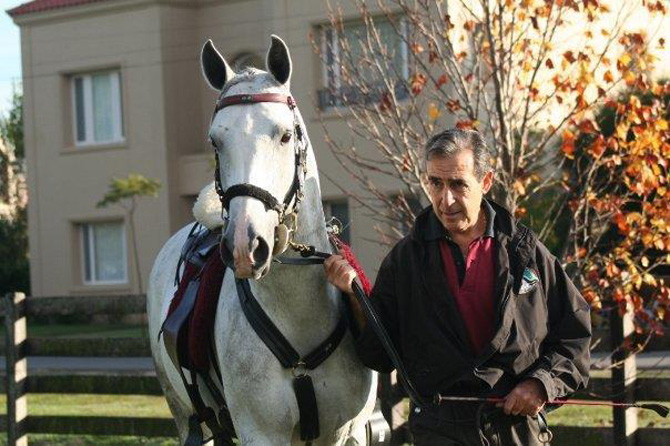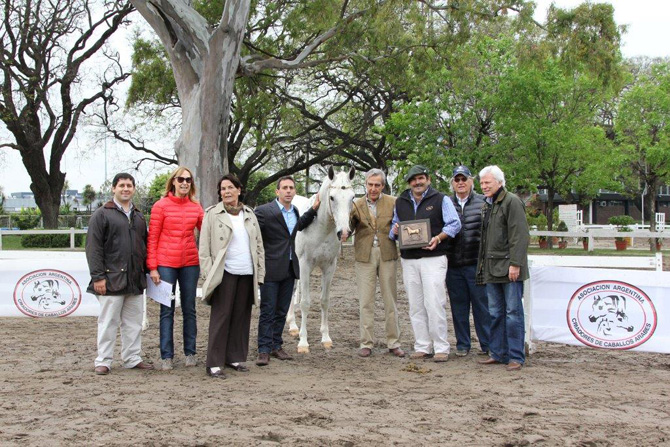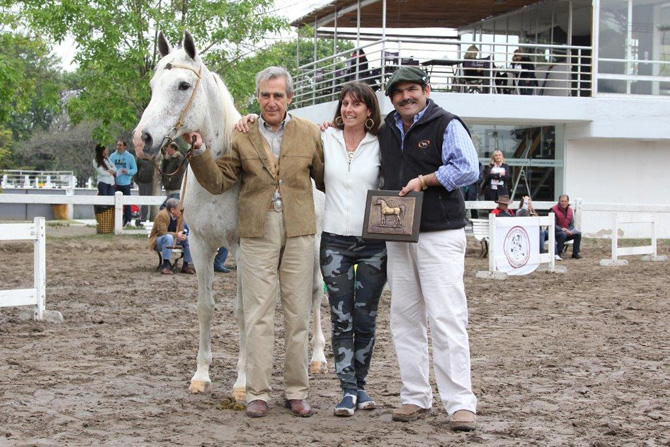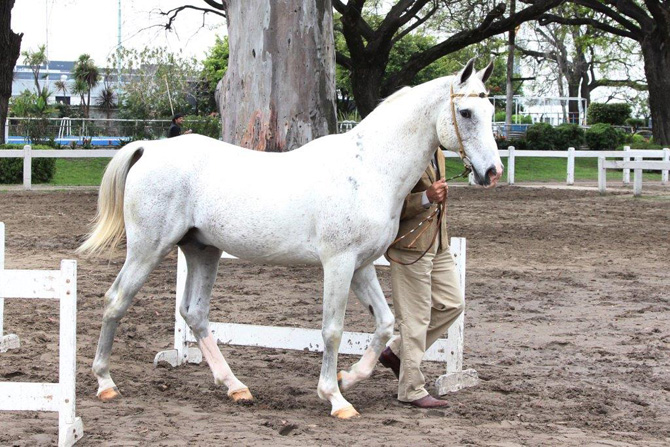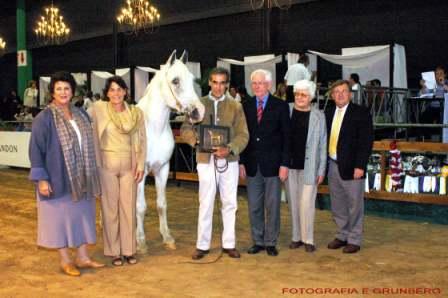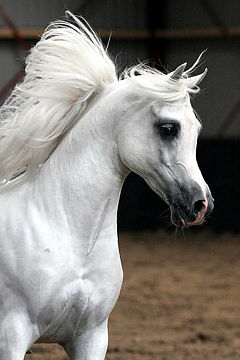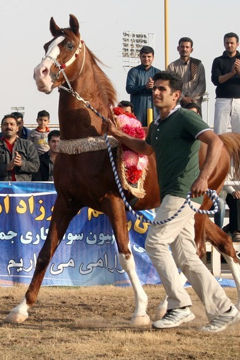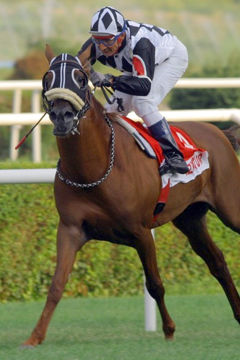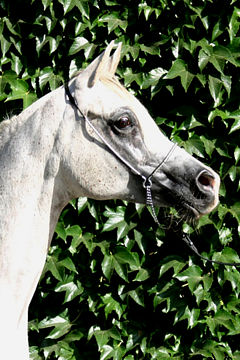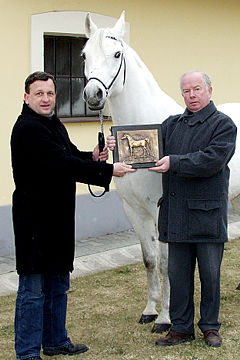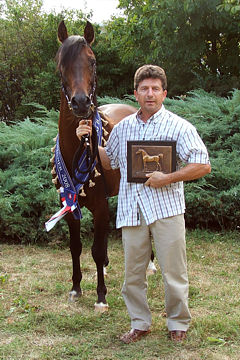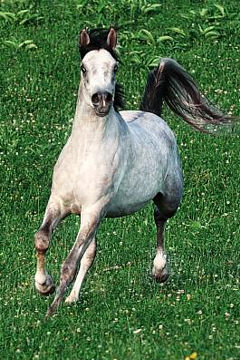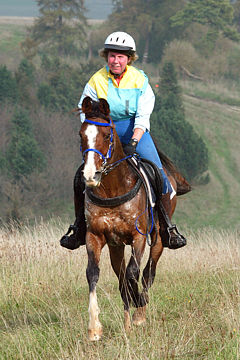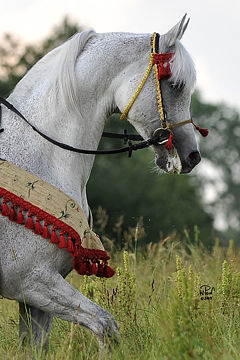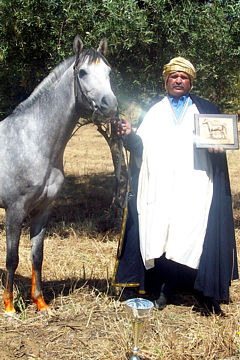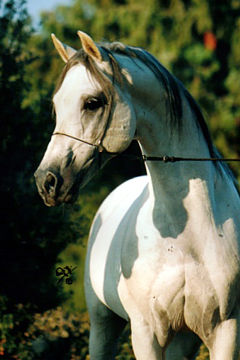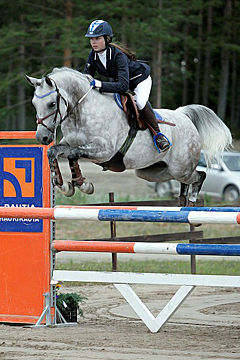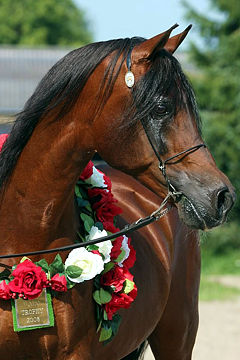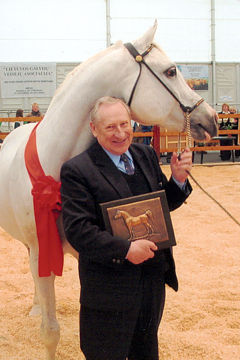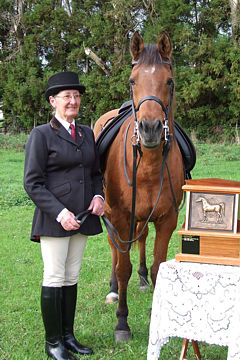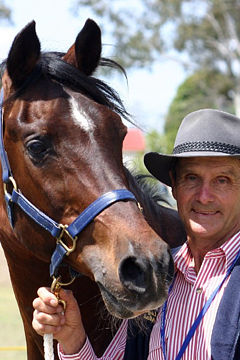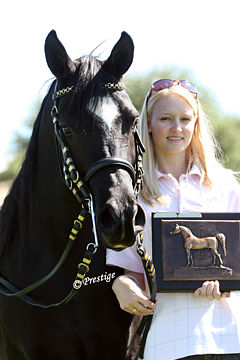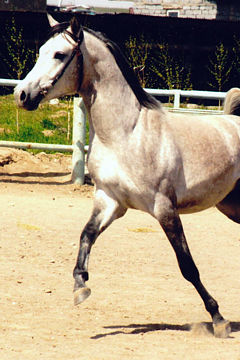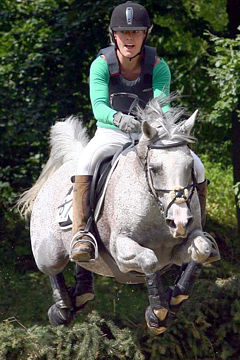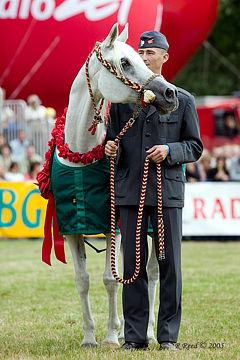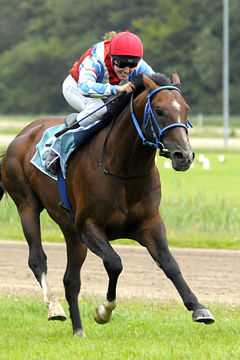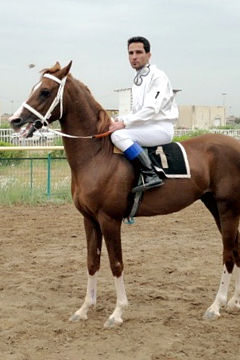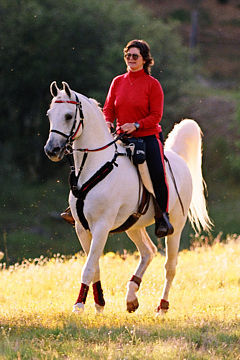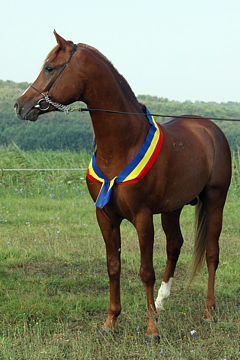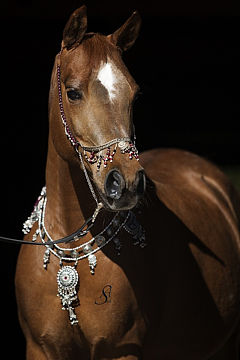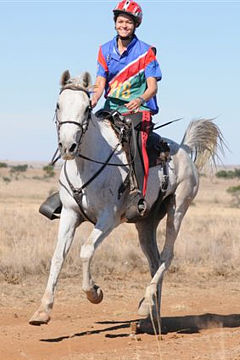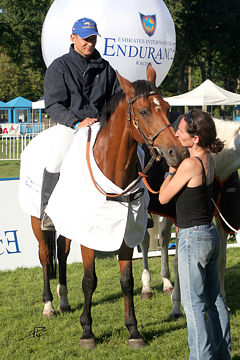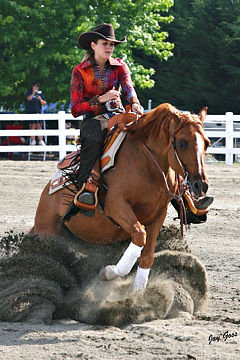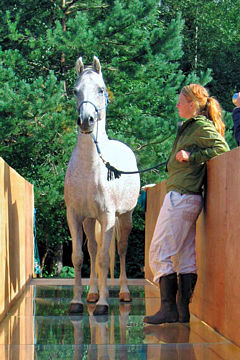![]()
Member Report from Argentina
REPORT MADE AT THE 2019 WAHO CONFERENCE
Mr. Carlos Ezcurra, Argentina: Good afternoon. Mr. Chairman, Executive Committee members, colleagues, Registrars and Observers. My name is Carlos Ezcurra and I am from Argentina, I am a member of the Board of the Argentine Stud Book. This is my first time here and I would like to start by thanking and showing my appreciation to the hosts, the Australian group who has organised a very very nice event and is making all of us feel at home even though we have travelled from the other side of the world.
In terms of the Registry I must say that, unfortunately, that in Argentina things haven’t been going very well economically in the last 100 years or 200 years, I can’t remember! So anyway. But lately in the last two or three years the foal numbers have come down not only with Arabians, we also register the Thoroughbreds and some of you may know Argentina is the fourth biggest Thoroughbred breeder in the world and actually in 2018 we have seen a decrease of 10% in Thoroughbreds and in Arabians. We were registering over 550 Arabian foals 5 years ago and this year we are not going to get to 400. The main reason is economics as you know, and it probably happens all around the world, breeding Arabian horses or breeding sports horses I would say, is mainly a hobby, a very expensive hobby, and when things don’t go well these things happen people start registering less quantity of horses.
It’s the same thing with shows. The Breeders Association used to organise four shows a year, one national and then many provincial, but in 2018 they had to cut it to two as there was not too many people interested in entering their horses in the shows, so they only had two shows last year, the national and a provincial one, just two.
What has grown quite a lot is endurance for Arabian horses but unfortunately the endurance races in Argentina are ruled and organised by the Equestrian Federation and they do not require the horses to show the papers to run there. So there are no official records on those races because you could run with whatever horse you want, Arabian or not, and they don’t ask you for the papers, not even the name of the horse, so you can rename your horse for the race whatever you like. What we have been doing this year in order to promote more official racing and endurance, which seems to be the only thing that is growing there, since we have got the expertise with the Thoroughbreds we are talking with the Arabian Association on the idea of trying to organize endurance races that will end at a racetrack, on a normal day of races, so that people get to know what endurance is about. We may start with that by the end of the year, but we are still just talking about it.
In terms of our stud book, our stud book has been online for more than ten years now and it updates in real time, as the online stud book works straight directly with the database. So whenever something changes there it shows on the screen and it has been like that for more than ten years. We are about to launch a new webpage with a massive amount of information, statistics and everything starting from the year 1900 approximately, everything will be there for free for everyone. But unfortunately, although we do have the official records for Thoroughbred racing, as I told you before we do not have the official records of Arabian racing, except for the time when they would race on the race tracks, but not for endurance because that is not ruled by us so we don’t have any power there.
I guess that’s about it. We hope that the registration of foal numbers will come up again soon. I mean, as I said before, living in Argentina and in many countries in South America is like living in an eternal roller-coaster going up and down and up and down, so we will go up again some day, hopefully soon but I don’t think that soon because we had 47% inflation in 2018, but it will come down one day. So that is my report.
REPORT MADE AT 2017 WAHO CONFERENCE:
Stud Book Argentino has provided the following information: In 2016, 358 foals were registered. In 2017, 346 foals were registered. In 2016 there were 6 shows and 12 endurance competitions. In 2017, there were 6 shows and 20 endurance competitions. Imports and exports remain stable.
REPORT MADE AT 2014 WAHO CONFERENCE:
Dr. Miguel Pavlovsky, Argentina: (This report was accompanied by a visual presentation of slides showing various statistics, horses and people). Good afternoon. I am Miguel Pavlovsky, delegate for the Argentina Stud Book. My co-delegate is my wife and partner, Celina Pavlovsky. First, we would like to thank our hosts His Highness Sheikh Abdullah bin Khalifa Al Thani and his team, the organizing committee and the Qatar Racing & Equestrian Club for the hospitality.
I am honoured and happy to be here in Qatar for the second time, the first time was 21 years ago in connection with the exportation from Argentina of the great Arabian horse on our racetracks, the stallion LC Daruk. He was owned by our stud, but he was bred by WAHO Executive Committee Member Georgina Pelham. This photo shows him parading before his last major stakes race in Argentina, he is wearing the silks of the Al Shahania Stud of Qatar. He won that race by many lengths and here he is with Gina Pelham and some of my family in the winners circle.
Now I come to the report for Argentina. We started with DNA typing in 2004 and microchipping in 2008. We have allowed artificial insemination since 1999 and embryo transfer since 2003. In 2014 it became mandatory for all breeds in the country to have microchipping. This chart shows the development of the registered Arabian horses in the country over the past 10 years. In 2003, there were 650 broodmares, 130 breeding stallions, 403 registered foals and 40 breeders. The number of broodmares showed a slight increase to 712 in 2006, to 820 in 2008, and to 860 in 2012 but has dropped by about 15% to 726 in 2013. The number of breeding stallions went up and down, reaching 158 in 2008, but has dropped again to 132 in the year 2013. Foal registrations also went up and down, with 565 in 2006, 449 in 2008, 543 in 2012 and 516 in 2013. The most important figures are in relation to the number of breeders in Argentina. This continuously increased to 65 in 2006, again to 70 in 2008 and up to 74 in 2012, but has dropped sharply by 50% to 32 in the year 2013. This is due to two special reasons, one is the very difficult economic situation in Argentina over the past two years, and secondly the loss of interest by some breeders in registering their foals because they are no longer taking part in shows or racing. It is not necessary to have registered horses to take part in endurance, and for most of the successful endurance horses which are sold and exported, we have found that many of the new owners do not request or want any registration papers. In 2013 Argentina exported 40 purebred Arabians, and imported 4. In the first ten months of this year, we have exported 58 horses and imported 7.
The Association of Arabian Horse Breeders of Argentina organizes three halter shows per year and helps to organize one major endurance event associated with the Endurance Federation. The total of FEI endurance competitions is 11 per year, with many local rides in different regions of the country. Most of the successful endurance horses are Arabians and Anglo-Arabs, and many have been exported to continue their successful endurance careers in Middle East countries such as here in Qatar, in the United Arab Emirates and Bahrain.
Celina and myself are very proud that our stallion Fugitivo, a top performance champion bred in our farm, was awarded Argentina’s first WAHO Trophy in 2005. I present this photo of him receiving his award in order to give thanks and credit to the WAHO Executive Committee for their work in giving such prestige to this trophy. In this case, several of them travelled a long way to be personally in attendance at the presentation. You can probably recognize Claudia Quentin, Hans Nagel, Izabella Zawadzka and Peter Pond in this photo. Fugitivo won many events in many disciplines, including our National Barrel Racing Championship in open competition against all breeds. Other WAHO Trophy winners in Argentina include ZT Naphl in 2006 and ZT Shakfantasy in 2007. Both were bred by Count Federico Zichy-Thyssen, a very successful international Arabian horse breeder from Argentina. It was with great sadness to all horse lovers around the world that they learned of his death 2 months ago.
Many Arabian horses from Argentina have demonstrated their great qualities in performance and in shows all around the world, despite the drop in horse registrations in 2013. A small group of horse breeders work very hard to preserve the excellent qualities of the Arabian horses of Argentina. Thank you very much.
REPORT MADE AT 2011 WAHO CONFERENCE:
Lady Georgina Pelham, Argentina: My name is Gina Pelham, delegate of the Argentine Stud Book and member of the Argentine Association of Arabian Horse Breeders. My co-delegate is Mrs. Maria Luisa Pereyra. We would like to thank most sincerely the Qatar Racing and Equestrian Club for hosting the WAHO Conference in this fascinating country which we are delighted to be able to visit.
The registration of foals has declined slightly over the last 3 years, due mainly to economic reasons, but we still registered over 500. 11 horses were exported. The Association organizes 3 halter and performance shows each year, the National Show in April, the Córdoba Show in September, and the Breeders and Futurity Show in November. We also take part in the Palermo Agricultural Show in July and the Patagonian Show in November. We organize 3 national and international endurance races a year, under the rules of the FEI and FEIA, as well as competing in the federal races and those organized in different parts of the country. There is great enthusiasm for endurance racing and this year, Mrs. Claudia Quentin organized an auction of some of her fantastic endurance horses in the northern province of Mendoza. It was a great success and will help bring new people to the breed and we thank her for this effort.
The Association has also organized judging seminars with well-known judges from abroad, and also courses on the care, conditioning and training of the Arabian horse. At each event, booklets on the history of the Arabian horse are given to the public and any questions are answered by experts.
The WAHO Trophy of 2010 was awarded to SF Yundi, bred by Elisabeth Grigg de Kuphal and owned by Sebastian Morando of Haras La Codisiada. SF Yundi is a stallion, winner of performance championships and also in endurance racing. Thank you very much for your attention.
REPORT MADE AT 2009 WAHO CONFERENCE.
MARIA LUISA PEREYRA: Since December 2008 microchipping is now mandatory by the Argentine Stud Book. Embryo Transfer is allowed, with a maximum of 3 foals per mare per year. In 2007, 562 foals were born, 43 horses were exported mostly to the USA and the UAE. 19 horses were imported. In 2008, 449 foals were born, 39 horses were exported and 15 horses were imported. The Argentine Arabian Horse Breeders Association organizes 5 to 6 shows annually. Endurance has become an important sport in Argentina, our Association together with the Argentine Equestrian Federation organizes 5 to 6 endurance competitions each year, two of these are International.
The WAHO Trophy has been a great success. In 2005 it was awarded to Fugitivo, belonging to Miguel and Celina Pavlovsky. In 2006, it was awarded to ZT Naphl, bred by Count Federico Zichy-Thyssen and owned by Carlos Larrere. In 2007 it was awarded to the stallion ZT Shakfantasy, bred and owned by Count Federico Zichy-Thyssen. Thank you very much.
The Argentine Stud Book recently issued a CD with the breeding from 1990 to 2006. During 2005, 475 foals were born, in 2006 there were 565 foals born. In 2005, 712 broodmares were in use, increasing to 863 in 2006. 137 stallions were used in 2005, and 155 during 2006. In 2005 we imported 14 horses and 11 were imported in 2006. In 2005 we exported 36 horses, and 64 were exported in 2006. There were 59 active breeders during 2005, and 65 during 2006. Therefore we are pleased to say that there was an increase of the Arabian breed in the country.
Blood-typing has been used for many years, nevertheless DNA has been mandatory since 2004 on all breeding stock, and also since 2004 all foals have been parent verified. The use of microchips is in development according to the requirements of the International Stud Book Committee (ISBC), we will use the ISO standard 11734 for microchipping and standard 11735 for the microchip reader. Artificial Insemination as well as transported semen, exported and imported are allowed. Embryo transfer with multiple foals registration per mare per year is allowed.
We have 6 shows a year in different parts of the country, with halter and performance classes, with approximately 35 to 80 entries each. Argentine horses achieved important prizes in shows in the USA, Europe and Middle Eastern countries. We also have a yearly programme of barrel-racing and pole-racing, and other reining competitions, which take place 6 to 8 times per years with approximately 35 to 40 competitors. We also have about 12 national and international endurance competitions a year, and many smaller local federal endurance events. This activity, under the rules of the FEI, has grown strongly during the past 5 years, becoming more and more popular in promoting the use of the Arabian horse among endurance riders. It is important to mention that Argentine Arabian horses have achieved world speed records in the United Arab Emirates in 120 kilometre and 160 km events, keeping this record since 2004 until today. Our local media, like TV and radio, normally transmit some of our activities promoting our Arabian horses.
In 2007 Argentina registered 529 foals. They also recorded 45 exports and 19 imports.

